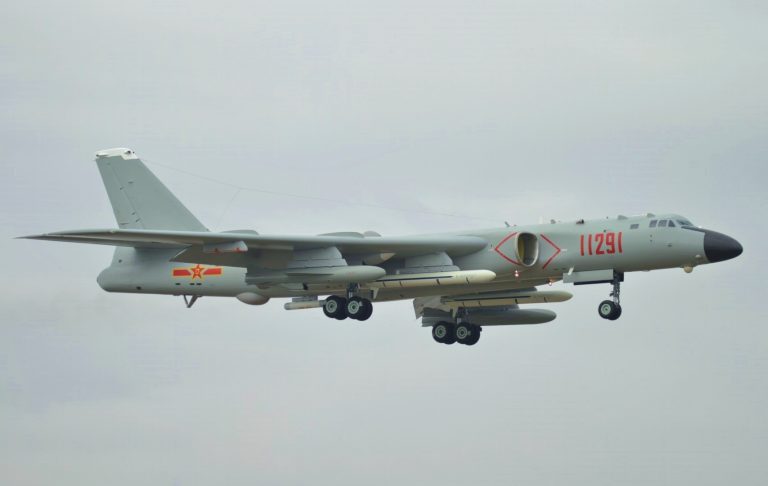Tensions between India and China are continuing to grow as the two major world powers clash against each other over the disputed Himalayan border. Both countries look set for another tense standoff along the Line of Actual Control (LAC) this winter.
According to a report by the South China Morning Post, the People’s Liberation Army (PLA) has deployed at least one long-range strategic H-6K bomber along its border with India. The move has been described by some analysts as a strong but deliberate warning to its neighbor to not increase frictions over the winter season.
On Nov. 11, 72nd anniversary of the PLA Air Force, the country’s state-owned broadcaster China Central Television (CCTV) relayed footage of an H-6K bomber flying over a mountain range, denoting that the warplane had been dispatched to the Himalayas.
H-6K jets have a combat range of more than 3,500km (2,174 miles) and are usually equipped with long-range CJ-20 cruise missiles for encounters on land and sea. However, the video showed that the bomber was carrying short-range KD-63 missiles instead.
The Indian Air Force reacted to the PLA’s deployment by sending Su-30MKI and Mig-29UPG fighter jets to their frontline air bases in Sikkim, Arunachal Pradesh, and Ladakh, the three majorly contested regions along the disputed frontier of the two nations, the LAC.
Redeployment to the west
Success
You are now signed up for our newsletter
Success
Check your email to complete sign up
An unnamed military source from Beijing revealed that H-6Ks were normally based in Shaanxi Province, but had been deployed in Kashgar in the western region of Xinjiang, on a short-term basis as of last year. The aircraft came under the Western Theater Command, which includes the Tibet and Xinjiang military regions, and is in charge of security along the disputed border with India.
“It’s very easy for the PLA to fly H-6Ks to the China-India border, because the aircraft are stationed … under the Western Theatre Command,” the source said.
Antony Wong Tong, a Macau-based military observer said that the deployment of the H-6K was “definitely a warning to India.” He also mentioned that New Delhi was “within the combat range of the H-6K and the striking range of the CJ-20.”
Srikanth Kondapalli, a professor in Chinese Studies, Centre for East Asian Studies, Jawaharlal Nehru University, New Delhi, told The EurAsian Times that Beijing was only “power signaling” by sending in H-6K to the LAC.

“If China was to make any aggressive military move, it would be below the threshold of conflict. The ‘use’ of bombers is, hence, ruled out. Further, the H-6 class bombers have earlier been stationed at Chengdu long ago so it should not really come as a surprise… The PLAAF is only trying to showcase its strength and it doesn’t look like a threat to India.”
With both countries blaming the other for the crisis along the border, China and India have moved to fortify their LAC defenses. So far, there have been 13 rounds of talks at the military commander level, but none have yielded any results.
The past few months have witnessed enhanced activity on both sides of the border. It has been depicted by a substantial increase in the number of troops, improvement in infrastructure on a war footing, stationing of arsenal, and carrying out military exercises in an attempt to warn each other














